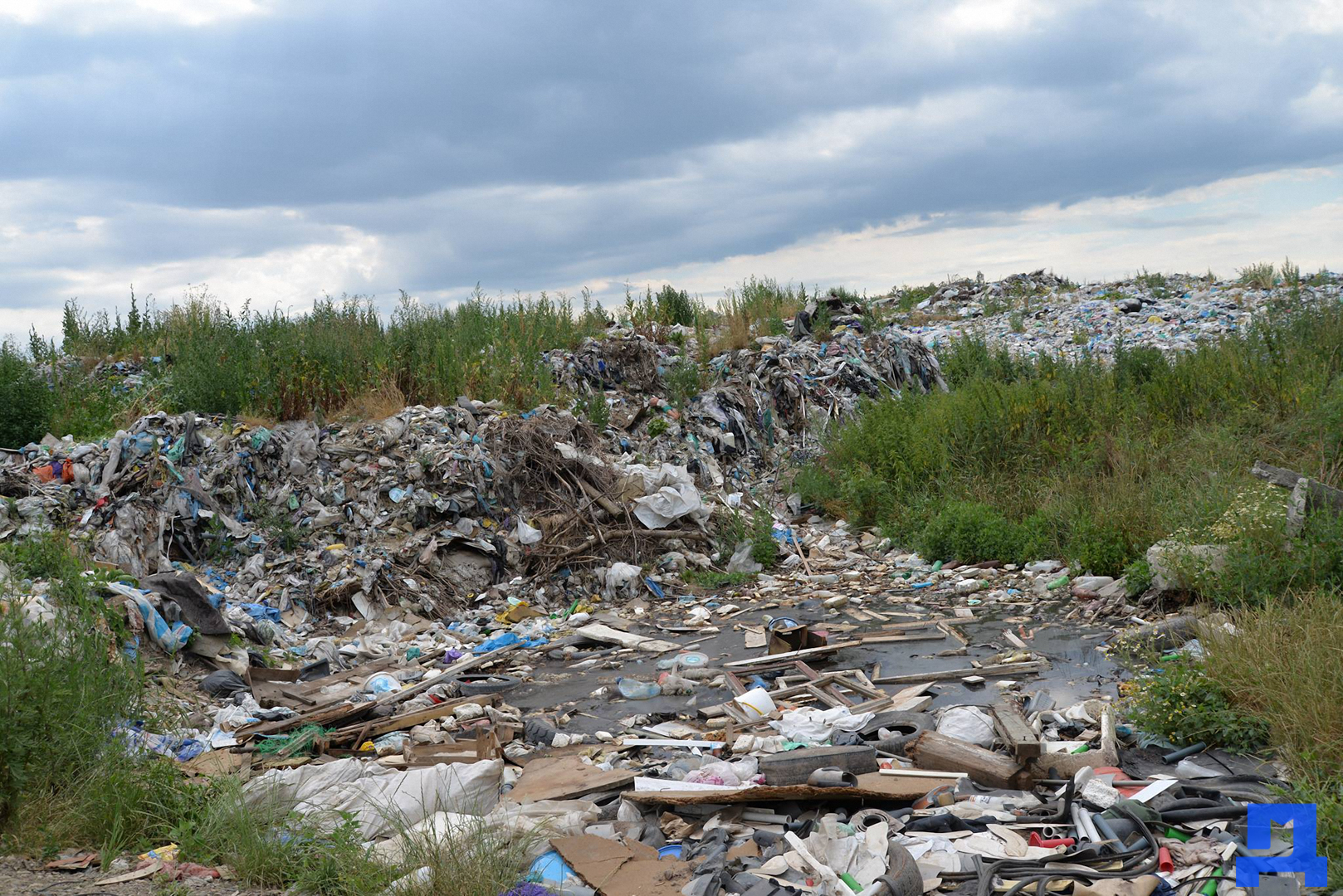Almost every day, the media draws our attention to different environmental issues, such as global warming, climate change, melting icebergs, disappearing species, etc., but we should first stop and take a look around us, at our own country first, and highlight the biggest environmental threats in Ukraine, many of which could soon end in complete disaster.
According to the most negative environmental forecasts, in 20 years the steppe will reach Kyiv, in 50 years- the waters of the Dnipro River will decrease considerably, and in 100 years - Ukraine may be left without forests.
What is killing the environment in Ukraine? What can be done to counteract environmental degradation? Some questions and answers to consider…
Consequences of the Donbas war
Prior to the onset of the war, the Donetsk and Luhansk regions were home to some 4,500 environmentally hazardous enterprises. Between 2014 and 2017, companies in the region reported over 500 cases of operational disruptions and related incidents, many of which were classified as potentially harmful to human health and the environment.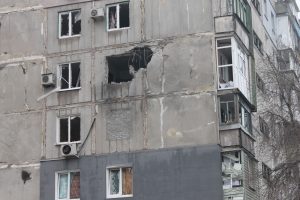
“The continued large-scale flooding of area mines will inevitably result in both surface flooding and subsidence of the surrounding area, rendering buildings unusable, engineering and communication infrastructure – gas lines, sewage and water supply systems – inoperative, and polluting surface and groundwater with iron, chlorides, sulfates, other mineral salts and heavy metals.”
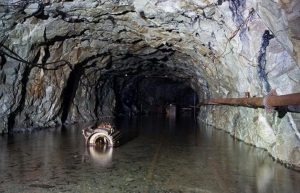
“In the first four months of the war, 20% of the occupied territory was devastated by fires. When we compared ignition points in different satellite images, we saw that in the dry season of 2014 there were 15 more fires than in the same season of 2013. This trend continues today. The fires are destroying natural steppe communities in the Donbas, some of the best steppe areas in Ukraine, ancient pine forests that will be difficult to restore, entire territories of Ukraine’s nature reserve fund, including indigenous species of plants listed in the Red Book of Ukraine.”Land and soil have been heavily impacted by the war. In the areas affected directly by the hostilities, the soil reveals systemically elevated concentrations of mercury, vanadium, cadmium and non-radioactive strontium, as well as gamma-radiation in excess of the respective values measured in areas unaffected by the fighting. Such dangerous substances can cause numerous diseases in humans and wildlife.
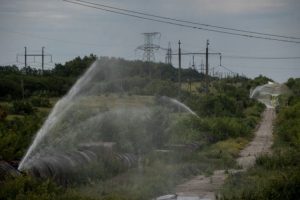
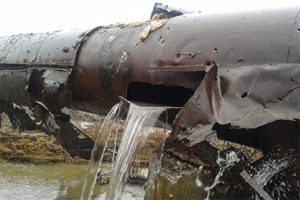
“In my opinion, the pollution from explosive weapons, especially Grad missiles, causes the most harm to the environment. Each explosion releases an enormous amount of toxic elements into the soil and atmosphere. Thus, these heavy metals accumulate in the human body, causing changes in the nervous and cardiovascular systems, autism, renal failure, metabolic disorders, and even fetal death.”Eco-activists agree that soil contamination will continue until war activities cease completely. It is impossible to cultivate anything on such soil or consume food products grown on such terrain without preparing and implementing a land recultivation program.
“National Republic of Amber”
In terms of amber reserves, Ukraine ranks third in the world. Thus, amber represents one of the major subsoil resources of the northwestern regions of Rivne, Zhytomyr, and Volyn, what inhabitants call the “National Republic of Amber”. The “NRA” lives according to its own laws and regulations. It could bring huge benefits to the state budget, except that the vast majority of the extraction takes place illegally. About 90% of the amber escapes state control and is handled and smuggled abroad by criminal organizations with the support of local politicians and law enforcement agencies.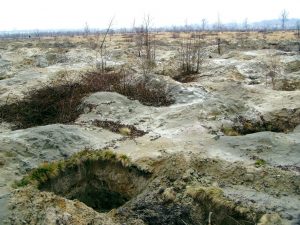
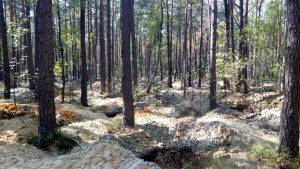
“Due to illegal amber mining, natural forests and marshes are destroyed, local rivers and streams are polluted, the hydrological regime is changed, and the fertile soil layer is lost. Moreover, there is virtually no law enforcement or state presence in mining areas; local youngsters get used to earning large, but illegal salaries, and refuse to work in other jobs. President Zelenskyy has registered a bill that increases penalties for illegal amber mining, and the government has introduced bills to simplify the mining process. However, it’s most important that all amber extraction projects undergo an environmental impact assessment. Otherwise, we’ll get more and more moon-like landscapes and the destruction of natural habitats will become totally legal.”
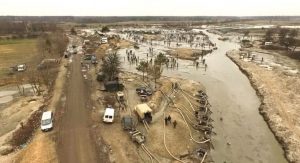
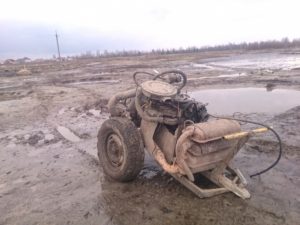
Massive Deforestation
Forests cover 15.9% of Ukraine’s territory. Due to foreign demand, Ukrainian loggers and timber companies are illegally trafficking abroad entire trains and lorries of fir trees, earning millions and millions of dollars. Deforestation has dramatically intensified as Ukrainian lumber is exported massively to Western Europe.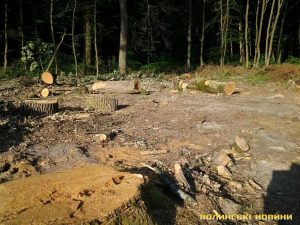
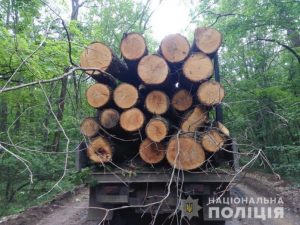
“The EU is by far the largest destination for Ukrainian wood exports, representing 70% of total production. EU purchases have been rising rapidly, breaking €1 billion in 2017... The EU buyers of this wood include a number of billion-dollar firms, whose owners are among Europe’s wealthiest individuals. Though they are not themselves formally accused of wrongdoing, Earthsight found some of these giant companies are actually mentioned in ongoing criminal investigations of officials in Ukraine. One – Austrian firm Schweighofer, Europe’s second largest sawmiller - has even been specifically implicated in the corrupt scheme allegedly masterminded by the former forest chief. All of them continue to import large volumes of wood from state logging enterprises which are the subject of such investigations. These companies supply products sold in the largest retail chains in Europe, including Homebase in the UK and Obi in Germany, HP copy paper on sale in branches of Staples and furniture sold by Ikea.”
Trash Chaos
The general public became fully aware of the waste management problem in May 2016 after a huge fire broke out at the Hrybovychi landfill (26 ha containing dangerous chemical and industrial waste-Ed) near Lviv, which led to the death of four employees and firefighters and caused a “trash crisis” in the city.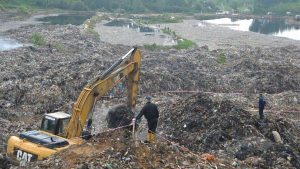
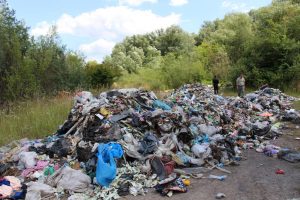
“Waste substances pollute the air, and can also leak into rivers and groundwater. Thus, heavy carcinogenic metals can be carried to local wells and reservoirs, thus increasing the risk of cancer among the local population. Uncontrolled incineration of waste can also cause cancer, and/or respiratory and cardiac diseases. Crops grown on land near a landfill will be inconsumable due to contamination by heavy metals and other hazardous substances. However, the biggest hazard is due to exothermic reactions that cause materials in the landfills to spontaneously combust. Fines and liability for violating environmental and waste legislation must be increased. Extended producer responsibility should also be introduced. The manufacturer must be responsible for the entire life-cycle of the product and especially for the take-back, recycling and final disposal. This strategy operates effectively in most European countries. In addition, it is necessary to eliminate the old unauthorized landfills and build modern landfills that would cover the needs of several administrative territorial units.”Ukraine has only one operating waste incinerator - Enerhiya - in Kyiv, which deals with 25% of all solid household waste produced by the capital’s residents. However, incinerators pollute the environment, and ash waste can potentially harm people’s health and the environment.
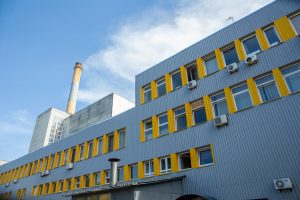
- eliminate illegal landfills;
- towns, villages and cities should concentrate on separate waste collection/recycling;
- establish special centres for the collection of hazardous waste - batteries, furniture, construction debris, medical waste, etc.
The mighty Dnipro roars no more…
When speaking of Ukraine’s Dnipro River, many activists sadly assert that the legendary river only sighs and groans… and roars no more. Dmytro Nadieyev, head of the public organization “Chysty Dnipro” (Clean Dnipro), says that the state of the Dnipro River is critical and points to four major problems: First – shoaling, which occurs as a result of solid runoff from tributaries such as the Desna River, Prytpiat River,etc. The Fishermen’s Association of Ukraine has counted 55 shoal banks in the Dnipro River. When a river silts up, more low-flow zones appear, thus leading to stagnant waters. Second - water bloom (dense aquatic population of microscopic photosynthetic organisms produced by an abundance of nutrient salts in surface water, coupled with adequate sunlight for photosynthesis-Ed). Our planet is getting warmer and warmer every year. Detergents containing phosphates drain into the sewage system and enter the Dnipro, thus constituting a nutrient base for blue-green algae (cyanobacteria), which proliferate intensively along the river.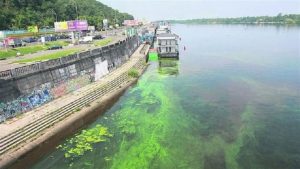
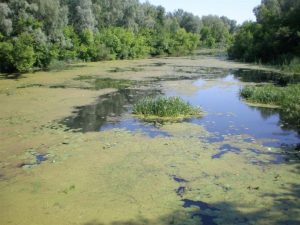

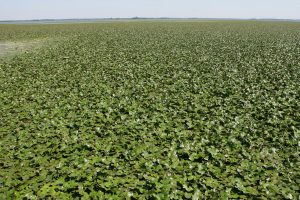
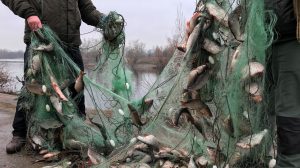
“The biggest polluters of the Dnipro are utilities, ferrous and nonferrous metals, energy transportation systems and agriculture. There are also a number of large industrial enterprises that pour their waste water into the river, especially near Zaporizhzhia, situated right in the middle part of the river. There is also a major problem with contaminated discharges that are not sufficiently cleaned up and eventually reach the Dnipro. Of course, these discharges include sewage and drainage waters and storm wastewater. These waters run through collectors and fall directly into our rivers.”Climate change also affects the state of the Dnipro River and the environment. According to pessimistic ecological forecasts, in 20 years, the steppe will move closer to Kyiv and in 50 years, the shallowness of the Dnipro will double.
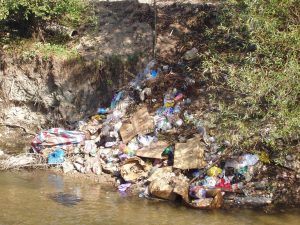
“Today the government has absolutely no vision of what the Dnipro will look like in 50 years, how water resources will be distributed, etc. Introducing a ban or minimizing discharges into the water, raising fines, establishing control and monitoring of water quality – these are all open questions.” underlines Hanna Tsvietkova.
During his presidential campaign, Volodymyr Zelenskyy referred to a Ukraine as a country “where the Carpathian forests, and not the MPs, must remain untouched” (referring to undisturbed forests in the Carpathians and the lifting of parliamentary immunity –Ed).
However, it is important for politicians to take real steps to resolve pressing environmental issues, and not just make empty promises to promote their popularity.
In turn, Ukrainians, who have chosen the European ideal for their country’s development, should follow the example of EU citizens, for whom the resolution of environmental problems is both urgent and political.
It is up to each and all of us to become more ecologically aware and meditate on what country… and world we are giving to future generations!
As the popular saying goes – “Україна починається з тебе!” (If you want to change Ukraine, start with yourself first!)

